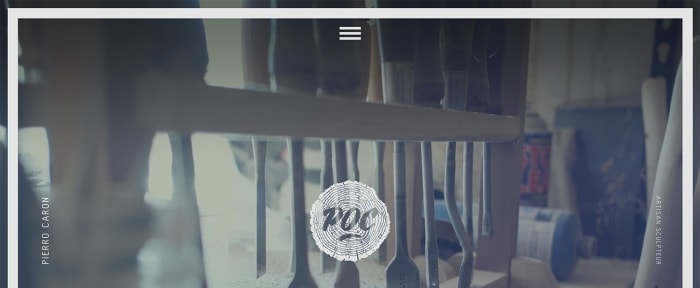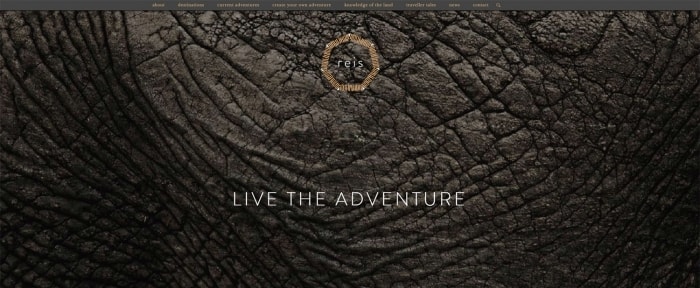How to Critique Your Own Work as a Freelance Designer
Working alone can come with a lot of perks, but there are some things that always seem easier when you are in a more structured group environment. One of these things is gathering feedback for your work.
With practice, you can learn to step back and provide a pretty good critique of your own design projects. It will take a little practice to get comfortable with the idea, but plenty of freelancers are quite good at evaluating their own work. If it’s not something you feel good about, this guide can help you learn to better critique your own work as a freelance designer.
2 Million+ Digital Assets, With Unlimited Downloads
Get unlimited downloads of 2 million+ design resources, themes, templates, photos, graphics and more. Envato Elements starts at $16 per month, and is the best creative subscription we've ever seen.
In the spirit of critiques, all of the examples in this post are from the Design Shack gallery. The gallery is home to more than 15,000 members and you can submit designs and collect inspiration from fellow designers.
Evaluate the Concept

Good design answers questions. It often answers them before users have a chance to even ask them.
A solid design does just this. It answers the questions presented by a concept. When evaluating a project, go back to the design brief or request. What was the final project supposed to do? What were the goals of the design?
Did the design meet these requirements with clear communication that represented the brand (or client) appropriately? If the answer is yes, you are on the right path. Even if you aren’t 100 percent sold on the aesthetics, a happy client is a sign of a job well done.
Consider Trends and Techniques

When you look at a collection of recent projects, do you see lots of trendy elements and techniques such as flat elements or Material Design principles or animation? It is important for you to understand what is trending with design and mix these techniques into projects.
There is a catch when it comes to trends. Too much or too little can cause problems for you and the sweet spot is somewhere in the middle. Using trendy elements is a good balance that can add a modern touch to a project without making it feel dated quickly.
Clients want you to be able to use new techniques and styles as well. They will often point out another project and an element that appeals to them. You need to be up on the concept and understand how it might be applicable (or why it is not).
Take a Step Back and Look at the Design Again

One of the challenges of self-critiques is that you are too close to the project to look at it like a user. Step away for a little while and come back to it with a fresh set of eyes.
When you come back to the design start with two exercises:
- Step back and look at the design from a physical distance. At what point does the design come into focus? Is that soon enough? (A billboard or poster should come into focus from a much greater distance than a phone app.)
- Interact with it like a user. How would you engage with the design if you had never seen it before? What buttons or elements would you click online? Now think about those interactions and consider if they work in the way you intended.
Think About it in Black and White

Look at the design from a different perspective. Flip it upside down or sideways or change the colors or fonts. Wait … what?
One of the best bits of advice I ever got as a young designer was “if a design works in black and white, it will work in color.” So strip the design down to the black and white outlines. Does it still work? Can you see the frame of something that will have appeal?
You can test it flipped as well. Even when presented upside down, the design should have something that draws you to it. Readability may be lost, but a conceptual pull will exist.
If a design only works exactly one way with no alternatives, you might have a problem. Consider different uses and perspectives to get the most of what a design can be.
Compare Your Design with Theory

Remember all that design theory tucked away in the back of your brain? It’s time to bring it out again. While you are probably using the concepts all the time – without thinking about them really – stop and think about some of them and how they relate to your project.
Pick apart the entire design and think about these elements and how your final project relates to the science of design.
- Color and contrast
- Space
- Typography
- Proximity
- Repetition
- Balance
- Alignment
- Emphasis
- Mathematically rooted principles such as the golden ratio
Questions to Ask Yourself

You can boil your self-critique down into just five questions about the design. This is a good place to start (and finish) when you are evaluating your own work.
- Does the design work within the project scope? Whether you really love the aesthetic or not, you need to consider whether the project met the goals of the client and if it was what they were looking for.
- Is the design usable? Whether you are working with print or digital projects, every design should be easy to comprehend. This includes everything from readability to actionable elements to user interface.
- Do I like this concept at a glance? When you look quickly at the design, it should appeal to you.
- Is the design trendy? The answer here can go both ways. If it is too trendy, the design might not hold up over time; if you aren’t incorporating any trends, your style may be dated and it might be time for a refresh.
- What does the design “say?” This might be the toughest question to answer, but it should be answerable. Every design should communicate a message or idea with purpose. In most cases, this should be evidently clear without a lot of work on the part of the user. When answering this question step back from the project and look at it like you know nothing about the information presented. Does the design still say the same thing?
Conclusion
Now you have one more tool in your kit to help you become a better freelancer. And even if you aren’t a freelancer, these concepts can help anyone better personally evaluate their work. It’s a tricky skill, but one that can really come in handy.
Freelancing 101 is an occasional series to help the increasing number of freelancers in the market. Whether you are a designer, writer, developer or wear multiple hats, we will share tips, resources and ideas to help you make the most of your small business. Is there something in particular you want to know? Let me know at [email protected].


